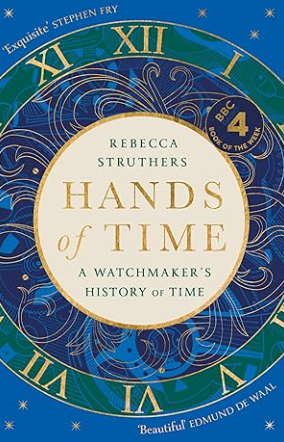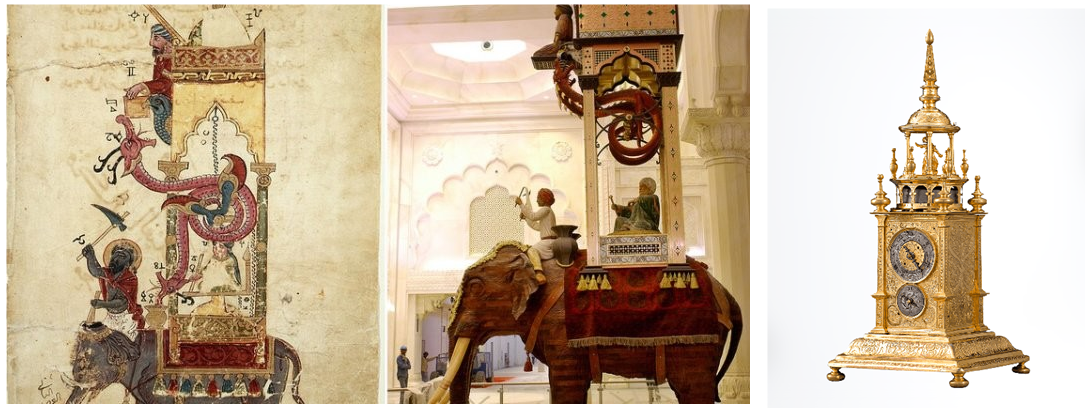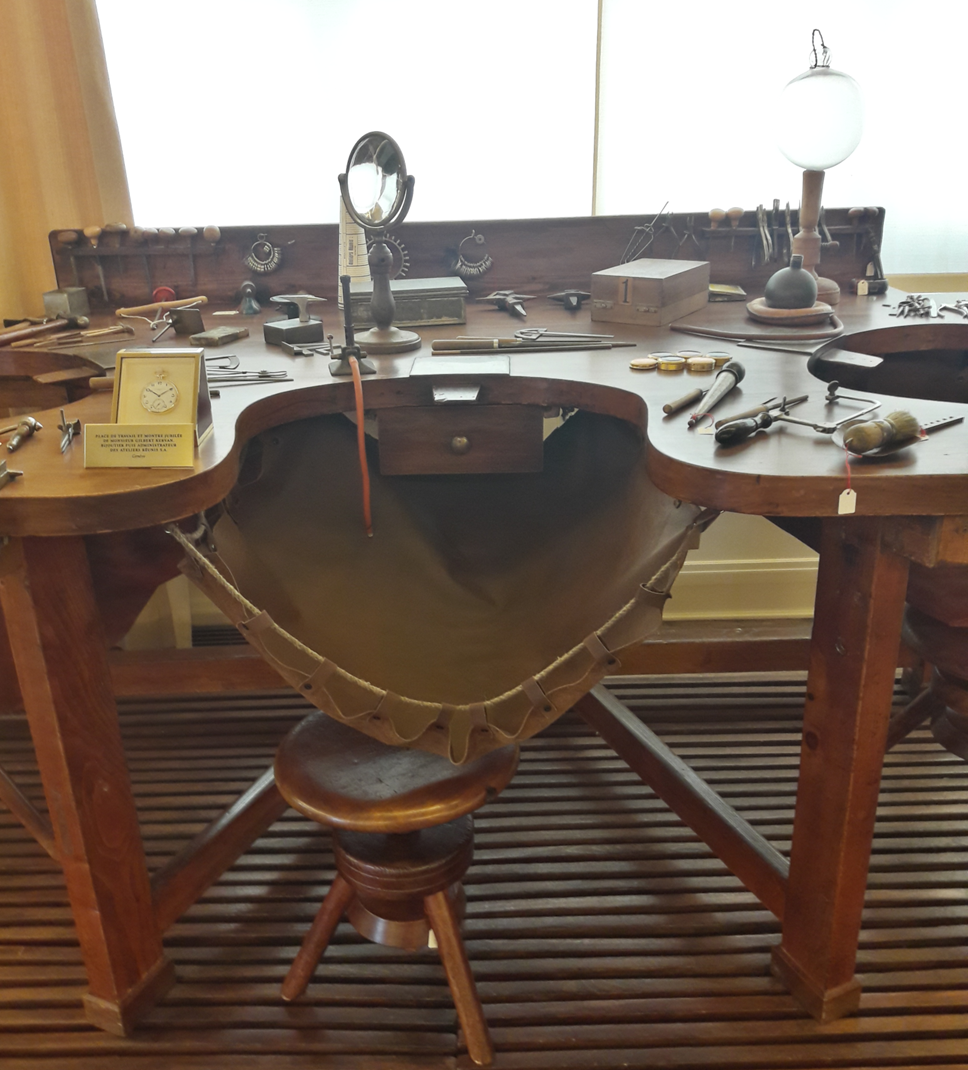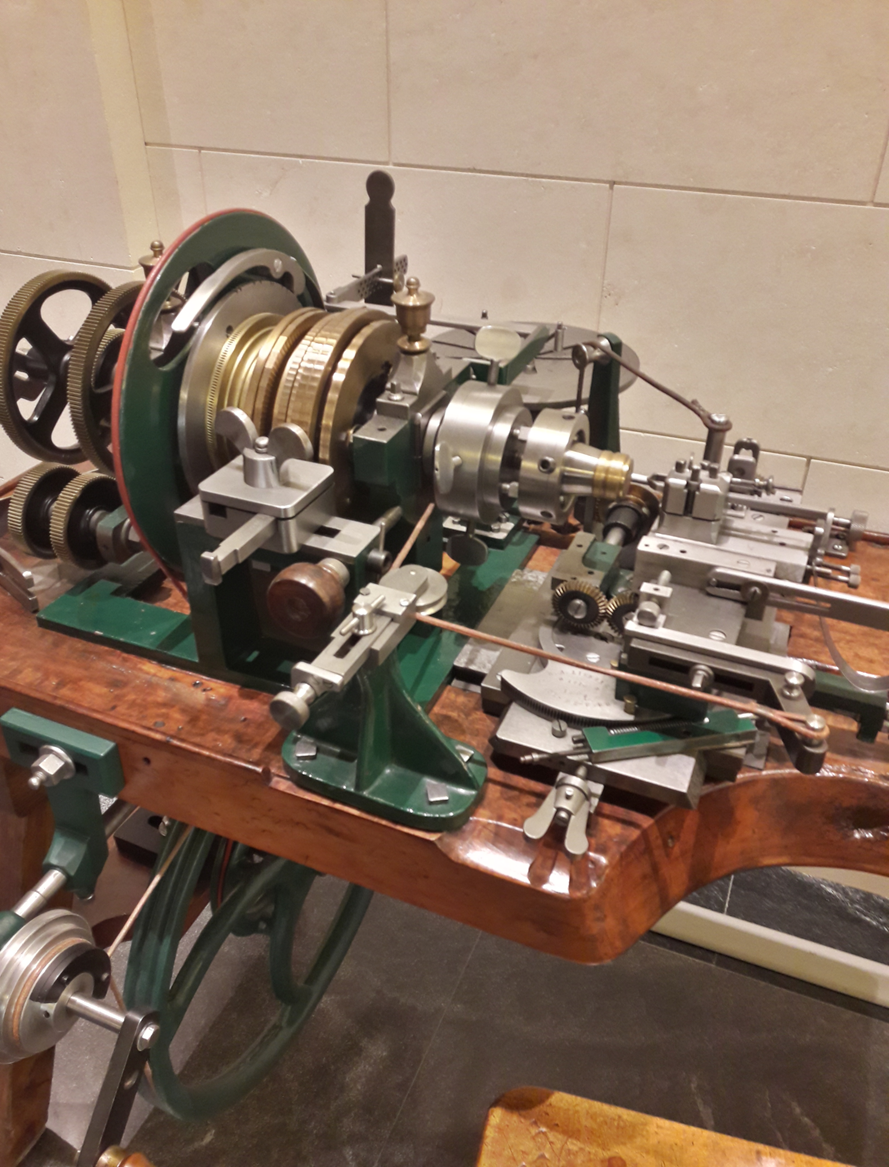Research: Lessons learnt from “Hands of Time: A Watchmaker's History of Time”
Time is the only thing that all humans have equally. Whether they come from a royal family or from an ordinary family, they all have the same 24 hours per day!

Time is the only thing that all humans have equally. Whether they come from a royal family or from an ordinary family, they all have the same 24 hours per day!
Time is the only thing that when it passes, it will go forever and cannot be replaced! Time is the only thing that human is always in loss.
Time keeping devices such as clock, wristwatch, pocket watch and other devices that can tell time, are very instrumental and sentimental for humans through history. Especially pocket and wristwatch (including mechanical, quartz and smartwatches), these types of time keeping devices always attach to human body. That is, they are at close proximity to human body.
In this post, we will learn insights from the book “Hands of Time: A Watchmaker's History of Time” that can be applied to research and development activity!
The book is authored by Dr Rebecca Struthers, one of the well-known independent British watchmaker.
From this book about the history of time keeping devices and how the devices affect human history in all aspects (worship, government, sociology, community development and of course research), we can extract many lessons that can be learnt and applied for research and development activities.
The lesson learnt (at least) are as follow:
READ MORE: Research as value and economy creation activities

Learning history is very important
It is very important for each of us to learn history. Because, learning history makes us become a thoughtful human and also teach us about wisdom so that we are not only a skilled labour.
If we only learn the hard skill in our fields, we will become only a high-skill labour, but we cannot think wisely on how to best implement our skill to benefit society.
By learning history, we can learn how a research or product can benefit society or, otherwise, degrade society. We can learn how to select a good product or research topic that really has impacts on society.
From the book, it is shown several examples of the positive and negative impacts of time keeping developments to the society.
Let start form a negative example. The invention of marine chronometer by John Harrison in the 18th century (The 4thiteration of his marine chronometer H4 in 1761) made longitude positions of a ship can be calculated.
This ability to determine the longitude position of the ship boosted the international trades (via ships) among Europe, America and Africa [1].
However, not only the international trade boosted economy, but also, this trade also contributes to the slave trade. That is, indirectly, the advance of marine chronometer has also been “misused” as “slavery tool”.
The most relevant today’s example is the controversial of the advanced GPT engine, a type of AI technology. This invention affects many layers of society, some of them get the benefits of it. But, many of them may be afraid if this GPT engine may take their jobs!
From this example, we can see that the impact of a technology advancement will impact not only to the direct users or stakeholder, but also may impact a large indirect stakeholder, especially in this global connected world. Hence, we need to learn from history to be able to predict what will be the impact of our research and development outputs.
Of course, there are more positive examples related to the history of time keeping. One example is as follow.
Hand Wilsdorf, the founder of Rolex (the king of wristwatch brand in modern market), is the one who brought the wristwatch for men. Before, wrist watches are only designed and used by women. It was a shame for men to wear a wristwatch as, at that time, men only wear pocket watch.
But, after reading a report and learning from the history of the Boer war (starting very late in 19th century in 1885 to very early 20th century), Hans found out the need for and importance of wristwatch for men is obvious, mainly for functionality.
In the Boer war report, the soldiers used their pocket watch strapped on their wrist to quickly tell time. Now, the main market for wristwatch is for men. Of course, woman also wears wristwatch.
Form Hans’ story, by learning from history, we can identify critical market needs and demands or trends that are not considered before for our research and development products.
Patience is key
In research and development, patient is instrumental for us to be able to endure the hard time (both physically and mentally) and long journey of the activities.
It will take a very long hours to deeply thing, design, building, testing and analysing data as well as writing reports in a research and development lifecycle. If we do not have patient, we will be quitting prematurely and never reach the goal of the research.
Let us learn from the history of the first marine chronometer developed by John Harrison.
John took 20 years to develop series of his marine chronometers until the H4 series that he submitted for the longitude challenge. This 20-year is a very long time, worth of a half of a whole human carrier in their lifetime. But, everything take time and we need to be patient.
The authors of the book that we are discussing “Hands of Time: A Watchmaker's History of Time” said it took them at least 7 years until their watchmaking workshop can generate stable incomes. Before, they were fighting for income to run their business as well as paying their bills.
From these stories, patient is key for us to be able to see long a head and endure short term or early hard time that we face during our R&D projects.
Remember, everything takes time and there are things that will take as long as they take!
Attention to details
A watchmaker works on a product that has a size of our thumbs. The components are very small in mm size or less. They need to use a magnifying lens to be able to see the details of the components.
A very expensive wristwatch is finished by a high skilled watchmaker for a very long hour. They need to check the details of the finishing of the edge of the very small components. The expensive price lies on the attention of details of the watchmaker to the very small of the part as well as the complexity of the watch mechanism.
This very high details to attention finishing that partly contributes to the high price of the wristwatch.
Also, when there is a problem in a watch, most of the time, the problem lies in the details and is not always obvious. Only a mal function of a very small part or even accumulated small dust can stop the whole watch from working,
The same for our research and development activities, we need to put attention to very details of the activities, including in the experiment design, what data to take, how to analyses the data, what data outlier that we need to remove.
In addition, writing a research paper for publication is a painstaking task. A lot of revisions, iterations and polishing of the writing to improve every detail of the words will take long hour of work.
But, a good written paper considers every words and sentences in the text so that a reader can read the paper easily and without misunderstanding.
READ MORE: 12 fallacies that should be avoided when constructing arguments

Infer and look deeper into the problem
The author of the book told that when she checks a watch to repair, she looks into many details before opening the watch to service, such as looking at the crown surface if there is a dent and other small details aspect of the watch.
By checking the outer condition of the watch before servicing, she can infer and look deeper what has happened to the watch. For example, if there is a dent on the crown, there is a possibility that the watch fell at the crown. This impact may destruct other internal parts related to the crown mechanism. This information will affect how the watch will be handles during service and what components to be inspect more during the service.
We can apply this mindset of inferring and looking deeper into a problem to our R&D activities. For example, when we set up an experiment apparatus. Many times, we get unexpected data.
To solve the problem, we need to look deeper about the set up. We need to check whether the samples are hold or placed properly, whether the parameters have been set correctly, whether the procedures, including detailed procedures, has been followed, whether the instrument has been warmed out and other considerations.
Another example is in writing a research paper. We need to look deeper into our writing and ask questions such as whether the sentences are clear, whether the wording selection is suitable, whether the paragraphs is ambiguous or not and so on.
High quality research outputs and papers are the results of the author has been put effort for looking deeper into their effort.
Think globally
We need to think about the global contribution of our specific research output. Yes, we may think that our results are only small and very specific.
But, remember, these small results may contribute to a bigger results or invention leading to a big impact to the society globally.
Our results may be the steppingstone to contribute to the answer of a big or significant global problem.
The division of time into minutes seems to be small (before, watch or clock only shows hour division due to inaccuracies of the watch or the clock). But, this time division into minutes contribute to the ability to manage or synchronise of a large people working together.
This minutes division also affect how a ruler govern an area of province. How task is divided precisely into minutes.
This impact of minute division into how a large people work together up to how a government running their daily administration certainty bring a huge impact to society.
READ MORE: Is research expensive?
Natural forces are the driver for research needs
We need to learn from nature to find the needs for our research and development activities so that we can build a product that is really usable in the society.
From the book, it is written that natural forces always the driver of our activity or product development.
In the past, time is kept by the so-called event-based timing. For example, the year is pinned by the most memorable natural or extraordinary event happening in that year instead of using a year number. That is, the time is told qualitatively.
Hence, there is a need to tell time quantitatively by numbers.
Initially, when clock was invented. The main power source of the clock is water. The famous Al-Jazari clock used water as the power source mechanism. Water-clock was the trend in the early clock invention.
However, the water clock face difficulties in Europe as in summer the water will evaporate fast and in winter the water will be frozen.
Thes situations cause the clock to be very difficult to use in Europe.
To solve this problem, clock makers tried to find a new natural power source that are not evaporated or frozen with respect to temperature changes.
Finally, they found a new way of powering a clock. that is by harvesting the natural gravity effect by using a pendulum. Christopher Huygens is the first to present this pendulum clock borrowing the idea from Galileo. However, this pendulum-based clock has a big size.
To reduce the size of a clock, finally the concept of “main spring” as a source of natural power to move the clock mechanises was invented. This main spring power source is then used until now for modern mechanical wristwatches as their power source.
Form this history, we can see that finding needs and idea for research, we need to look at our surrounding. For example, countries with large portion of sea will put more focus on maritime research topics. Meanwhile countries that are mostly desert will put focus on water saving or solar energy harvesting research topics.

Figure 1 above shows the famous water-powered elephant clock designed and built by Al-Jazari. The clock used a Greek water raising mechanism to run the clock. This clock represents several manifestations of advanced civilisation at that time. An elephant represents the Indian and African culture, a phoenix represents Egypt, turban represents Arabic culture, carpet represents Persian, and dragon represents a Chinese culture. All these symbolic components are in one mechanical assembly device that can tell time accurately for that era.
There will be always a hard time
We are not sure whether we will find very useful results from our research and development activities. However, one thing that is for sure is that we will find a lot of hard time during our research journey.
We need to embrace the hard time and learn from them. It is ok to make mistake as long as we learn from the mistake and can move on to the next steps.
The author of the book has been struggled for 7 years to be able to have a regular pay check. During these 7 years, they must work on producing high quality watches, repairing antique watches and other activities. This situation for sure is hard.
Also, the author of the book was a drop out from a course before joining a jewelry class. The authors did not give up with the situation of dropping out from a course, in fact, she kept trying to find what she good at and pursued the study and carrier in that path. Now, she is one of the respected British independent watch makers that can make a high-quality watch from scratch all by hands.
Continues learning and improvement should be in our mindset
After producing a good result or finding from our research and development, we should not stop there, we need to move on, improve and carry them forward.
We need to carry on a continuous learning and always try new things. We should not stop when one solution doesn’t work. Instead, we need to learn from it, and try a new solution until we can solve the problem at hand.
From history, the very efficient self-winding system in all automatic (mechanical) wrist watches has been undergone many continuous improvements for many design and development iterations.
The John Harrison’s marine chronometer has been continuously improved into several improved version. He at least made four improved version of the marine chronometer before he tested it to solve the longitude problem.
Abraham Louis Breguet (notably the most celebrated watch maker after the 17th century) improved a balance spring to include an anti-shock system, called “parachute mechanism”. The anti-shock system is based on a parachute-like spring damper to absorb and reduce impacts force on the balance spring pivot. Also, he is the one who invented the famous Tourbillon system in watch making.
Curiosity is the booster
It is very obvious that curiosity is the source of spark ignition to start a research activity. Many new significant inventions came initially from a simple curiosity. From this curiosity, a mindful question will emerge and to answer that question we need to perform research and development activities.
The first pendulum watch is initially the idea of Galileo when he saw a swinging chandelier lamp. This pendulum movement is caused by the gravity effect and can be used to power a clock. This idea is then realised by a Dutch engineer Christopher Huygens. Of course, many more well know examples can be found.
We need to develop a habit to think and question how things work around us. Try to take time to think about our surrounding and how it works as they are. From this, we may find a good question to be solved. And, this question can be the driver of our next research activities.
Mutual collaboration is required
To have a great research impact, mutual collaborations from different people with different experience are required. This collaboration includes the hand in hand work with the research funder.
Also, as a human, we need a support from others and also need to support others.
Traditionally, a watchmaker will have a patron that fund him or her to make a watch. Because, it is very expensive to make a watch since it requires long hour of high skill worker as well as require materials to make the watch.
Usually, the patron of the watch maker has the idea of what trends are currently there in the market, what type of watched design people are looking for and other important information.
A watchmaker usually does not have time to look at what market needs as they always focus on making a watch.
The same with the collaboration between a researcher and the funder. The funder, can be from a government or private institution, usually has the general view of what problems that are needed to be solved by the research or what the needs of society are.
With a good collaboration between the funder and the researcher, a great research output that has a great impact to society can be realised.
READ MORE: Simplicity is the ultimate sophistication: The use of simple rules for successful research
Deep work
Deep work is a means of focusing our energy and mind into solving problems or learning something new or finishing a specific task without any distractions for a minimum certain period of time (let say at least one hour) [2].
During this deep work, our brain will create new connections to represent new knowledge that we have just learnt.
The same for watch makers, they always perform deep work when working on a tiny component of a watch. They can sit hours, without talking, without checking messages and other things, just focusing on the watch they are working on at their watch maker table.
We need to learn from watch makers on how to fully and deeply concentrate on a single task at one time, without any distractions, for a quite long period of time.
Only by performing this deep concentration work, we can produce a meaningful results or product or can learn a meaningful new knowledge.
Watch maker always appreciate time. They know that when time goes, it will never come back and cannot be replaced.
One trick to help us to appreciate time is by using a conventional clock or traditional (mechanical) analog watched to read time.

Do not be discouraged from external situations
Many times, external factors disturb our research activities. For example, the funder cuts their funding, our research topic is not aligned with the government interest, instruments break down, the lack of support from mentors, and other external factors that negatively affect our research.
From the history, Breguet always said to his employees to not be discouraged when they face difficulties during a watch making process and keep focusing on their work.
Also, the biggest invention of Breguet, that is the Tourbillon, was invented by him when he was exiled in 1795 from Paris due to political situations (Note that some others said he invented Tourbillon in 1801, but 1795 seems to be the correct one since this year is the period when he exiled to Le Locle in Switzerland).
From this one story (of course there are a lot of similar stories at different situations for different people during human history), it is clear that negative external factors cannot be an excuse to stop our activities.
In fact, those factors should be the motivation to thrive forward to invent and accomplish something. We should not give up to external situations!

The importance of scaling up
For a product to be able to generate positive returns from high investments that have been put into research activities, the product needs to be scaled up!
Only by scaling up productions, significant return can be obtained. Of course, there are specific product that should not be scaled up its production due to, for example, exclusivity or rarity.
From the history, Dutch forgery watches showed that how scaling up production is important to reduce cost and capture markets and not to lose market to other competitors. In this Dutch forgery era, they produce a huge number of watches in Switzerland because the Switzerland has developed a method to mass produce watches called “establisage”.
This “establisage” method embraced a mechanised production system and part standardisation concept.
With the adoption of the mechanised production (using machines), the production of watch components can be speed up with lower cost than the manual production method.
The part standardisation enables part interchangeability, meaning, an assembly mechanism of a watch can be made from different components produced form different places. Outsourcing parts were made possible.
This part interchangeability shows the important concept of tolerancing in mechanical assembly, that is the importance of GD&T.
Do not underestimate human skills
Finally, in our modern life where many tasks can be automated by using machines, we still need to put importance and learn/maintain highly specific human skills.
These skills include manual labour skills that require very long hours and many learning and trying experiences to master, such as the skills to use manual machine to make very price and small watch components as well as the skills to finish a component.
The combination of human high skill, intuition and feeling, extraordinary accuracy and precision can be obtained, even more than a machine can achieve. The only trade-off is it will require some time. hence, patient and perseverance are key!
Before, we always think that all jobs that require manual labours will be replaced by machines or robots. However, it is proven to be wrong! The rise of GPT AI engine, in reality, becomes a threat to the job of programmers that were thought to be impossible to be automated.
Human high physical skills, that require very long hour to master, will never be replaced!
No matter how old the method to learn the skills. We need to keep the perseverance and passion to learn these human high skills.

READ MORE: The most important tools for research
Conclusion
In this post, we extract many lessons learnt from the book “Hands of Time: A Watchmaker's History of Time”. This is a book about the history of time keeping devices through centuries and is written by a real watchmaker!
Learning history can provide us with knowledge and wisdom that we cannot get from other learning methods. From this book, many lessons can be applied to boost our research and development activities for example, just to mention a few, attention to details, continuous learning, perseverance during hard time, collaboration, optimistic and many more.
References
[1] Struthers, R., 2023. Hands of Time: A Watchmaker's History of Time. Hodder & Stoughton: England
[2] Newport, C., 2016. Deep work: Rules for focused success in a distracted world. Hachette UK.
You may find some interesting items by shopping here.
